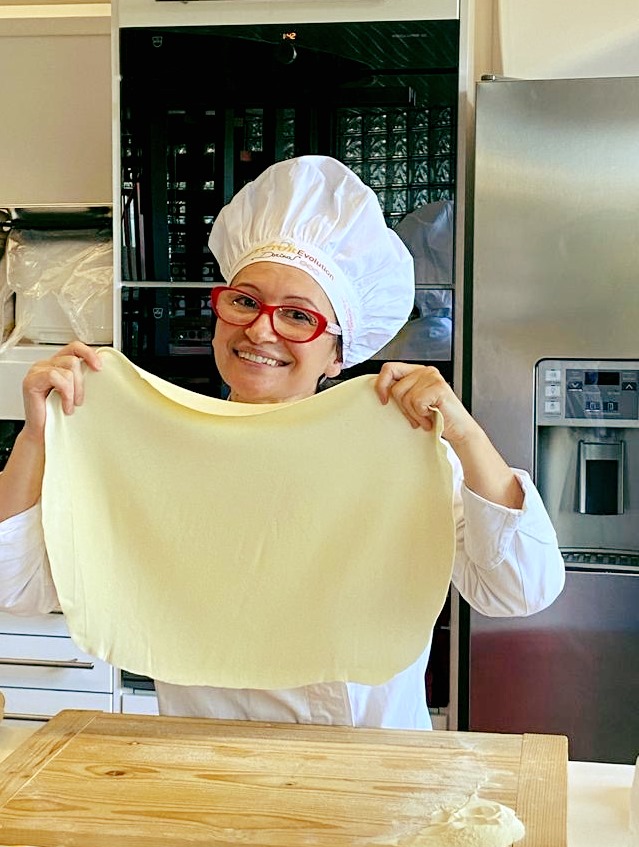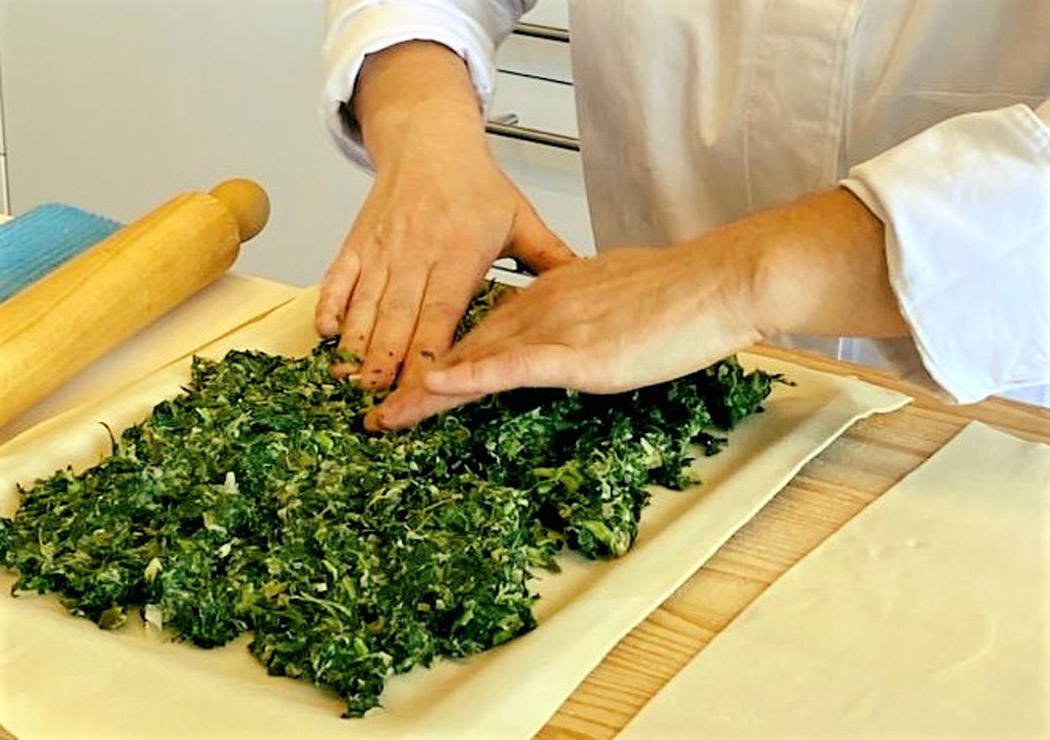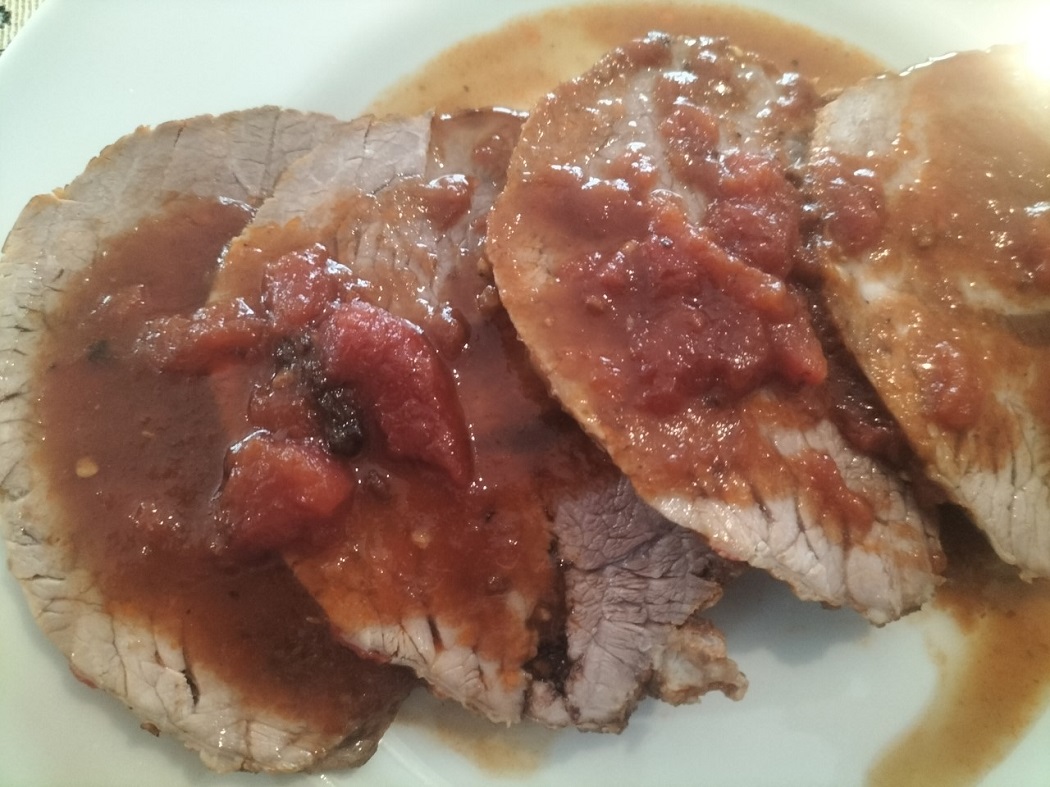In the nearly thirty years I spent in Reggio Emilia, I have learned to appreciate the culinary tradition of this city and I was pleasantly surprised by how the love for a simple 'savoury pie' could involve so many people.
Every Reggiano is immediately recognizable through a slice of Erbazzone that can be enjoyed at any time of the day: from children at recreation to the elderly at the bar, from breakfast to late aperitifs. In a festive banquet of a wedding, a graduation party or a birthday, it is demanded in equal measure to the much more famous pizza.

Erbazzone is a typical pastry of the Reggio Emilia province with an ancient flavour of simple ingredients. It is so connected to the everyday life of the city that it is considered part of the Italian gastronomic culture.
This dish was born near the Emilian Apennines from the processing of wild herbs and local products such as Parmigiano Reggiano and lard.
The classic version of the recipe provides a filling based on spinach or chard and spring onions, while the pastry completely wraps the filling and is then covered with bacon pieces, which slowly melt in the oven giving the Erbazzone its typical flavour.

ngredients of the traditional Erbazzone recipe
Stuffing:
- chard 500 gr
- spinach 500 gr
- Parmesan cheese 120 gr
- lard pesto 150 gr
- EVO oil 50 gr
- onion 150 gr
- 1 clove of garlic
- parsley 20 gr
- grated bread 50 gr
- salt 10 gr
Pastry:
- flour type 00 300 gr
- lard 50 gr
- salt 10 gr
- water about 100 ml
The prepared pastry must be homogeneous and must be left to rest so that the liquids hydrate the starches and develop the gluten making it elastic.
It must be rolled out with a rolling pin making a first thin layer for the base.
 The filling (or pesto) is prepared with a sautéed base to which the herbs previously boiled, well squeezed and coarsely chopped are added. Once cooled, the other ingredients are added and blended well together. The filling must be an intense green colour, quite dry, grainy but compact.
The filling (or pesto) is prepared with a sautéed base to which the herbs previously boiled, well squeezed and coarsely chopped are added. Once cooled, the other ingredients are added and blended well together. The filling must be an intense green colour, quite dry, grainy but compact.
The pesto rests on the base of the Erbazzone. Another thin sheet of pasta must then be placed on top of the pesto, wrapped in a rolling pin and slightly wrinkled with the fingers to create the typical folds of the real Erbazzone.
At this point the covering paste is pierced with a fork and the Erbazzone is baked at a temperature of 200 degrees for about 45 minutes. As soon as it is taken out of the oven, the pastry must be crunchy and recall an intense flavour of lard.
 This is the tradition, but on the Erbazzone I presented a master's thesis at the Culinary Nutrition Academy and I created a more balanced version suitable for all people and with studied nutritional values. I have cooked gluten-free, vegan, vegetarian, lactose-free, traditional, nutritional, plain or coloured pasta.
This is the tradition, but on the Erbazzone I presented a master's thesis at the Culinary Nutrition Academy and I created a more balanced version suitable for all people and with studied nutritional values. I have cooked gluten-free, vegan, vegetarian, lactose-free, traditional, nutritional, plain or coloured pasta.
I studied and cooked them all, perhaps I am the only cook of foreign origins who has ever studied a recipe of Italian gastronomy so much.
A traditional slice of Erbazzone is about 80 grams which corresponds to 200 kcal, while in my recipe there are only 84 kcal.
In fact, an excessive amount of saturated fat and a high salt content could cause health problems. Eating well is synonymous with physical and psychological balance, you feel lighter, feel better, perform more and keep your weight and health balanced.
I kept all the ingredients required by the traditional recipe and after six months I found the right balance by decreasing fat and salt, introducing a lot of fibre, creating that triangle of nutritional balance between proteins, carbohydrates and lipids to be able to eat even two portions without any sense of guilt.
Cooking is an art, art is loving, loving is helping others ...








Follow us